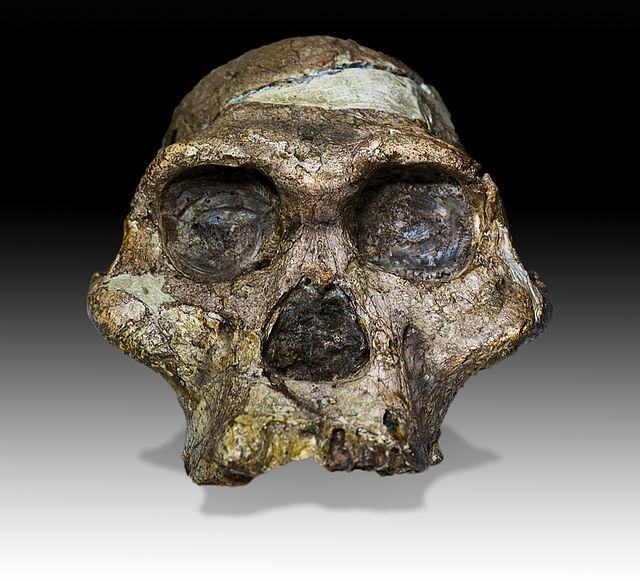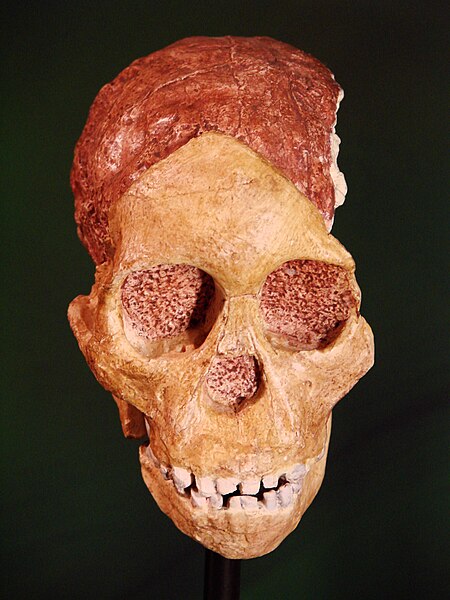Lomekwi is an archaeological site located on the west bank of Turkana Lake in Kenya. It is an important milestone in the history of human archaeology. An archaeological team from Stony Brook University in the United States discovered traces of Lomekwi by chance in July 2011, and made substantial progress four years after in-depth excavations.
Lomekwi is near the west bank of Lake Turkana, which is pictured in green on this satellite image.
Australopithecus is a genus of early hominins that existed in Africa during the Pliocene and Early Pleistocene. The genera Homo, Paranthropus, and Kenyanthropus evolved from some Australopithecus species. Australopithecus is a member of the subtribe Australopithecina, which sometimes also includes Ardipithecus, though the term "australopithecine" is sometimes used to refer only to members of Australopithecus. Species include A. garhi, A. africanus, A. sediba, A. afarensis, A. anamensis, A. bahrelghazali and A. deyiremeda. Debate exists as to whether some Australopithecus species should be reclassified into new genera, or if Paranthropus and Kenyanthropus are synonymous with Australopithecus, in part because of the taxonomic inconsistency.
Australopithecus
Taung Child's skull
Reconstruction of a largely hairless male A. sediba by Adrie and Alfons Kennis at the Neanderthal Museum, Germany
Australopithecus afarensis model at the Smithsonian National Museum of Natural History. This reconstruction depicts the facultative bipedalism hypothesis, indicated by the use of the tree for stabilization.





